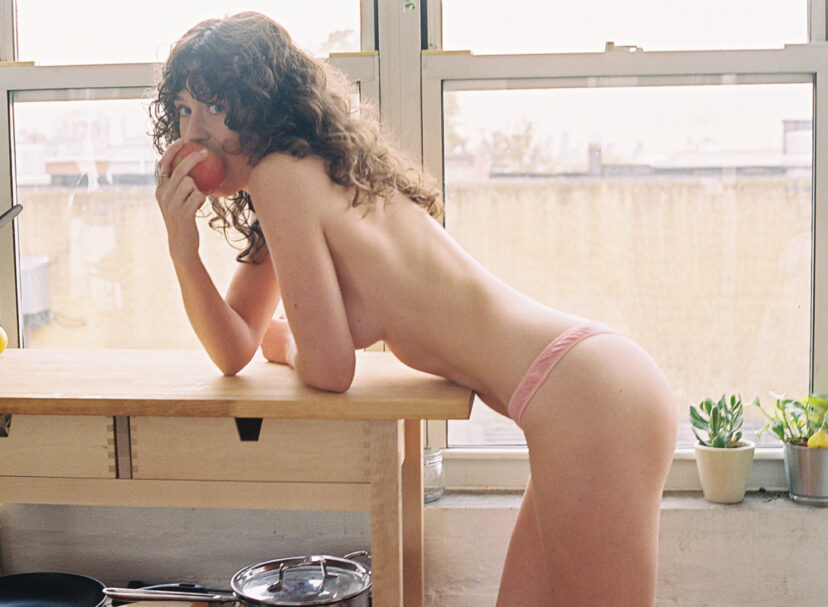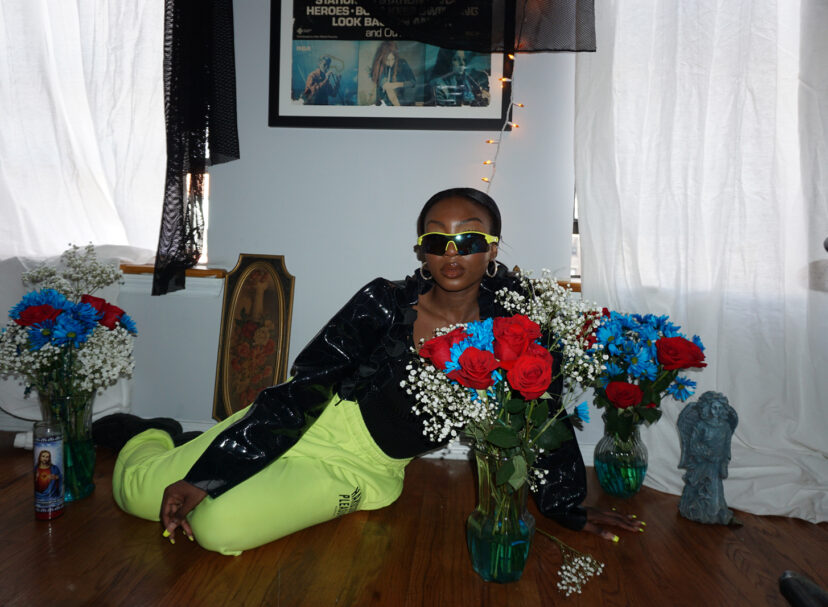Text by Alec Coiro
Video by Joe DeNardo
When I visited Vera and Daphne in their studio, they were in the middle of working on the new designs for Spring/Summer 2015. The studio on Canal Street has a beautiful South-facing view of the Manhattan bridge and the lower-Manhattan skyline. It’s where the two twin sisters, along with one assistant, make their samples and do about a third of their production.
We love the way knit can’t entirely be controlled. It has its own logic.

Correll Correll’s production is split between the studio and the factory, often with aspects of a single garment being produced or processed in both places. This sort of split production is integral to Daphne and Vera’s personal, material-driven approach, and it is only possible because Correll Correll’s factories are located in New York’s garment district, allowing each garment to be ferried back and forth between the studio and the factory during the course of it’s construction. Vera gave the example of a garment that “is cut in the garment district, brought back here where we dye part of it, and then we bring it to the factory and then they sew it and finish it.”


Producing locally is important to the sisters, in part because, as Daphne notes, “New York has been a classical manufacturing place for many many years, and we hope it stays that way, so we will do our best to participate in it and push it forward.” Vera continues, “The garment district is the one remaining pocket of real manufacturing remaining in the metropolis. And it’s fascinating to walk into a room in the middle of Manhattan and see 200 sewing machines running in the same time.” Using the factories in New York also makes sense because Correll Correll privileges intimate, personal craftwork. Vera observes that “The local process definitely fits with our clothing, which people always describe as very personal.” Most of the garments that go out to stores have gone through one of the Correll’s hands at some stage in the production, which makes each collection personal in a way that exceeds the design vision; in the case of Correll Correll, the trace of the designer’s own hand is left on each piece.

Knit has always been a hallmark of the label, often incorporated in unexpected ways. Vera and Daphne describe their work with knit as a kind of “manipulation.” Vera explained how this “often means a combination of techniques, such as hand-knitting, machine knitting, or a combination of the two and then we combine this with other techniques such as embroidery or some overlaid woven structures or some cut-and-sew pieces added to it.” The process comes out of a “obsession with the material itself.” Vera is attracted to the way knit can elude the knitter’s intentions: “We love the way knit can’t entirely be controlled. It has its own logic.” When you look at the way the sisters integrate knit, you immediately see what Vera means. The result of the process is that many aspects of their garments could not be produced by a machine. They describe the look as “painterly,” which aptly evokes the uniqueness of their handcrafting process.

Daphne and Vera think of the collection in terms of what they would want to wear themselves. “We want to make very comfortable and easy clothes, but we also want them to be nice and fashionable and a little sexy and interesting.” I’m always surprised when, for example, we find out that all the bridesmaids are wearing our dresses because it’s nothing we would have ever thought of, but it’s really nice to hear.” It is fitting that the men and women who wear Correll Correll do so in personal ways that surprise the designers, as the garments, from their inception, have been made in a personal and surprising way.

